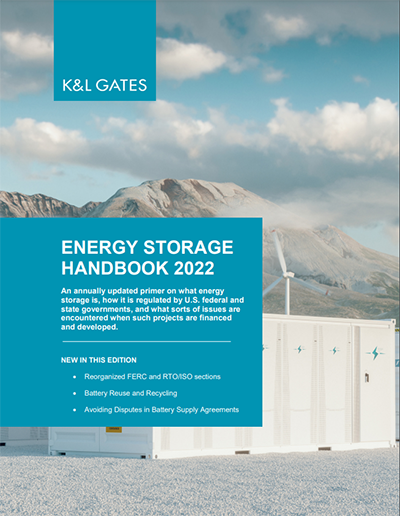Calling All Hydrogen Players!
By: Laurie Purpuro
The Department of Energy (DOE) has begun the process of establishing “Hydrogen Hubs” that are funded in the Infrastructure Investment and Jobs Act, aka the “infrastructure package.” The infrastructure package provides $8 billion for hydrogen hubs, plus an additional $1 billion for hydrogen electrolysis research, development, deployment and commercial applications. Another $500 million was appropriated in the infrastructure package for a Clean Hydrogen Manufacturing, Recycling, Research, Development and Demonstration Program. All of this funding is to be distributed over the next five years.
The Hydrogen Hub Program. Through the Regional Hydrogen Hub Program DOE will choose a minimum of four locations in the U.S. to locate hydrogen hubs — networks of clean hydrogen producers, potential clean hydrogen consumers, and connective infrastructure located in close proximity. The law calls for diverse energy sources for hydrogen production at the hubs, requiring, to the maximum extent practicable, that one hub produce hydrogen from fossil fuels; one from renewables; and one from nuclear energy.
H2 Matchmaker. To help hydrogen players connect with others and create “hubs”, DOE has stood up the “H2 Matchmaker” tool, an interactive map which includes various hydrogen producers, infrastructure companies, consumers, and other stakeholders, along with their contact information. You can find the H2 Matchmaker map here, where you will also find the H2 Matchmaker Self-Identification Form. You can use the H2 Matchmaker Self-Identification form to submit your own information for the H2 Matchmaker Map.
Requests for Information. DOE has issued Requests for Information (RFI) for these programs, which give stakeholders the opportunity to provide input that DOE will use in developing Funding Opportunity Announcements (FOAs). The Hydrogen Hub RFI can be found here, and the deadline is March 21. The RFI for the Hydrogen Electrolysis Program as well as the Clean Hydrogen Manufacturing, Recycling, Research, Development and Demonstration Program can be found here, and the deadline is March 29.
To learn more about our Hydrogen practice, please CLICK HERE.

